Artículos SCI
2020
2020
Fotocatálisis Heterogénea: Aplicaciones
Preparation of ZnFe2O4/ZnO composite: Effect of operational parameters for photocatalytic degradation of dyes under UV and visible illumination
Zouhier, M.; Tanji, K.; Navio, J.A.; Hidalgo, M.C.; Jaramillo-Páez, C.; Kherbeche, A.Journal of Photochemistry and Photobiology A: Chemistry, 390 (2020) 112305
Show abstract ▽
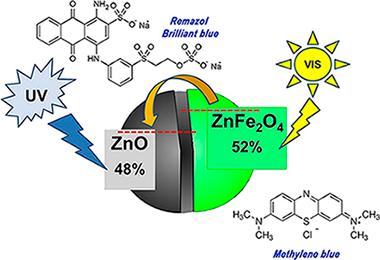
An ZnFe2O4/ZnO composite catalyst was prepared by solution combustion method. In this study, one nominal molar percentage of iron was used in the synthesis, corresponding to 20 % molar relative to ZnO. The samples were characterized by X-ray diffraction (XRD), X-ray photoelectron spectroscopy (XPS), X-ray Fluorescence (XRF), Scanning Electronic Microscopy (SEM), Transmission Electronic Microscopy (TEM) and Ultraviolet-visible (UV–vis) diffuse spectroscopy (DRS). The photocatalytic activities of the catalysts were investigated based on the degradation of two dyes, methylene blue (MB) and remazol brilliant blue (RBB), in aqueous solution under both UV and visible light illumination respectively. It was found that the composite had a good photocatalytic activity at basic pH by using 1 g/L of catalyst under UV illumination for both MB and RBB. Under visible illumination, while pristine ZnO showed no activity, the composite exhibited an excellent visible efficiency, reaching up to an 80 % conversion of the initial dye concentrations in 2 h. The enhancement of the visible photocatalytic activity of Fe/ZnO sample with respect to pristine ZnO is attributed to the formation of ZnFe2O4 coupled with ZnO, having a narrow band gap value that contributes to the absorption of visible photons with an improved separation path for the photo-generated carriers.
Marzo, 2020 | DOI: 10.1016/j.jphotochem.2019.112305
Reactividad de Sólidos
Role of particle size on the multicycle calcium looping activity of limestone for thermochemical energy storage
Duran-Martin, JD; Jimenez, PES; Valverde, JM; Perejon, A; Arcenegui-Troya, J; Trinanes, PG; Maqueda, LAPJournal of Advanced Research, 22 (2020) 67-76
Show abstract ▽
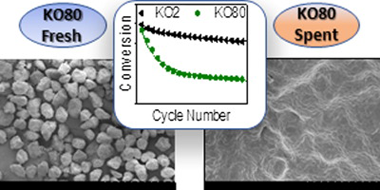
The calcium looping process, based on the reversible reaction between CaCO3 and CaO, is recently attracting a great deal of interest as a promising thermochemical energy storage system to be integrated in Concentrated Solar Power plants (CaL-CSP). The main drawbacks of the system are the incomplete conversion of CaO and its sintering-induced deactivation. In this work, the influence of particle size in these deactivation mechanisms has been assessed by performing experimental multicycle tests using standard limestone particles of well-defined and narrow particle size distributions. The results indicate that CaO multicycle conversion benefits from the use of small particles mainly when the calcination is carried out in helium at low temperature. Yet, the enhancement is only significant for particles below 15 μm. On the other hand, the strong sintering induced by calcining in CO2 at high temperatures makes particle size much less relevant for the multicycle performance. Finally, SEM imaging reveals that the mechanism responsible for the loss of activity is mainly pore-plugging when calcination is performed in helium, whereas extensive loss of surface area due to sintering is responsible for the deactivation when calcination is carried out in CO2 at high temperature.
Marzo, 2020 | DOI: 10.1016/j.jare.2019.10.008
Nanotecnología en Superficies y Plasma
Positron annihilation analysis of nanopores and growth mechanism of oblique angle evaporated TiO2 and SiO2 thin films and multilayers
Garcia-Valenzuela, A; Butterling, M; Liedke, MO; Hirschmann, E; Trinh, TT; Attallah, AG; Wagner, A; Alvarez, R; Gil-Rostra, J; Rico, V; Palmero, A; Gonzalez-Elipe, ARMicroporous and Mesoporous Materials, 295 (2020) 109968
Show abstract ▽
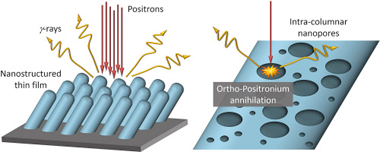
The nano-porosity embedded into the tilted and separated nanocolumns characteristic of the microstructure of evaporated thin films at oblique angles has been critically assessed by various variants of the positron annihilation spectroscopy. This technique represents a powerful tool for the analysis of porosity, defects and internal interfaces of materials, and has been applied to different as-deposited SiO2 and TiO2 thin films as well as SiO2/TiO2 multilayers prepared by electron beam evaporation at 70 and 85 zenithal angles. It is shown that, under same deposition conditions, the concentration of internal nano-pores in SiO2 is higher than in TiO2 nanocolumns, while the situation is closer to this latter in TiO2/SiO2 multilayers. These features have been compared with the predictions of a Monte Carlo simulation of the film growth and explained by considering the influence of the chemical composition on the growth mechanism and, ultimately, on the structure of the films.
Marzo, 2020 | DOI: 10.1016/j.micromeso.2019.109968
Materiales de Diseño para la Energía y Medioambiente
Binder-free supercapacitor electrodes: Optimization of monolithic graphitized carbons by reflux acid treatment
Gomez-Martin, A; Gutierrez-Pardo, A; Martinez-Fernandez, J; Ramirez-Rico, JFuel Processing Technology, 199 (2020) 106279
Show abstract ▽
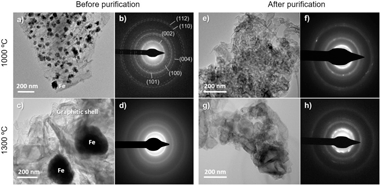
The rational design of electrodes mimicking the cellular structure of natural bio-resources has been a matter of increasing interest for applications in energy storage. Due to their anisotropic and hierarchical porosity, monolithic carbon materials from natural wood precursors are appealing as electrodes for supercapacitor applications due to their interconnected channels, relatively low cost and environmentally friendly synthesis process. In this work, a liquid-phase oxidative treatment with refluxing nitric acid at 100 degrees C for 8 h was performed to enhance the surface properties of beech-derived graphitized carbons treated with an iron catalyst. Microstructural, textural and surface investigations revealed that this strategy was successful in removing amorphous carbon and in functionalizing their surfaces. The crystallinity, accessible surface area, micropore volume and surface functionality of beech-derived carbons were increased upon the reflux treatment. The resulting porous carbon materials were evaluated as binderless monolithic electrodes for supercapacitors applications in aqueous KOH electrolyte. A maximum specific capacitance of 179 F.g(-1) and a volumetric capacitance of 89 Fcm(-3) in galvanostatic charge/discharge experiments were reached. Monolithic electrodes exhibited good cycling stability, with a capacitance retention over 95% after 10,000 cycles.
Marzo, 2020 | DOI: 10.1016/j.fuproc.2019.106279
Reactividad de Sólidos
Development by Mechanochemistry of La0.8Sr0.2Ga0.8Mg0.2O2.8 Electrolyte for SOFCs
Garcia-Garcia, FJ; Tang, YQ; Gotor, FJ; Sayagues, MJMaterials, 13 (2020)
Show abstract ▽
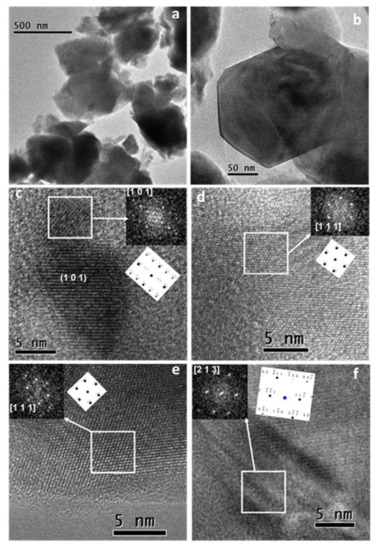
In this work, a mechanochemical process using high-energy milling conditions was employed to synthesize La0.8Sr0.2Ga0.8Mg0.2O3-δ (LSGM) powders from the corresponding stoichiometric amounts of La2O3, SrO, Ga2O3, and MgO in a short time. After 60 min of milling, the desired final product was obtained without the need for any subsequent annealing treatment. A half solid oxide fuel cell (SOFC) was then developed using LSGM as an electrolyte and La0.8Sr0.2MnO3 (LSM) as an electrode, both obtained by mechanochemistry. The characterization by X-ray diffraction of as-prepared powders showed that LSGM and LSM present a perovskite structure and pseudo-cubic symmetry. The thermal and chemical stability between the electrolyte (LSGM) and the electrode (LSM) were analyzed by dynamic X-ray diffraction as a function of temperature. The electrolyte (LSGM) is thermally stable up to 800 and from 900 °C, where the secondary phases of LaSrGa3O7 and LaSrGaO4 appear. The best sintering temperature for the electrolyte is 1400 °C, since at this temperature, LaSrGaO4 disappears and the percentage of LaSrGa3O7 is minimized. The electrolyte is chemically compatible with the electrode up to 800 °C. The powder sample of the electrolyte (LSGM) at 1400 °C observed by HRTEM indicates that the cubic symmetry Pm-3m is preserved. The SOFC was constructed using the brush-painting technique; the electrode–electrolyte interface characterized by SEM presented good adhesion at 800 °C. The electrical properties of the electrolyte and the half-cell were analyzed by complex impedance spectroscopy. It was found that LSGM is a good candidate to be used as an electrolyte in SOFC, with an Ea value of 0.9 eV, and the LSM sample is a good candidate to be used as cathode
Marzo, 2020 | DOI: 10.3390/ma13061366
- ‹ anterior
- 104 of 410
- siguiente ›














